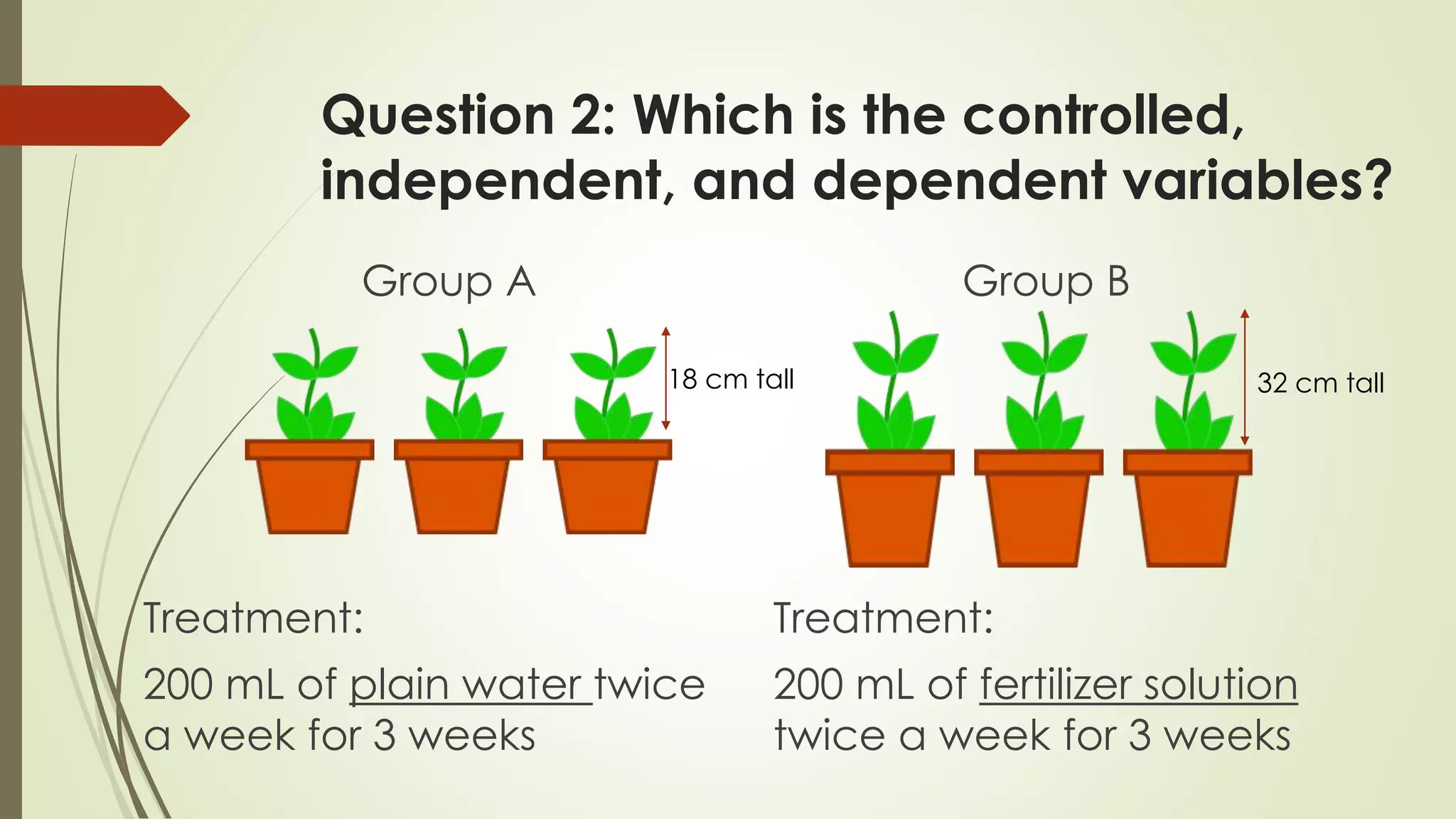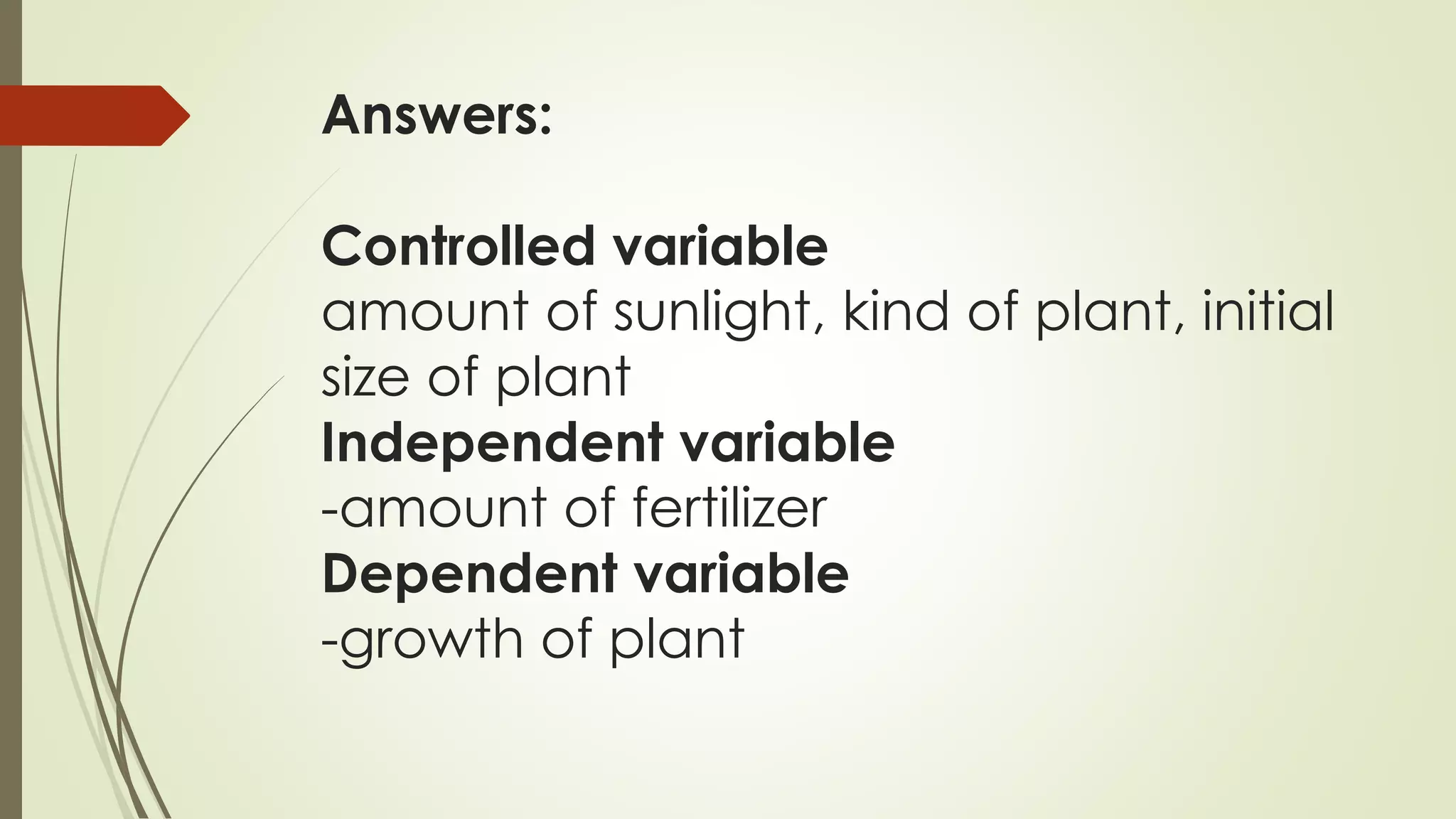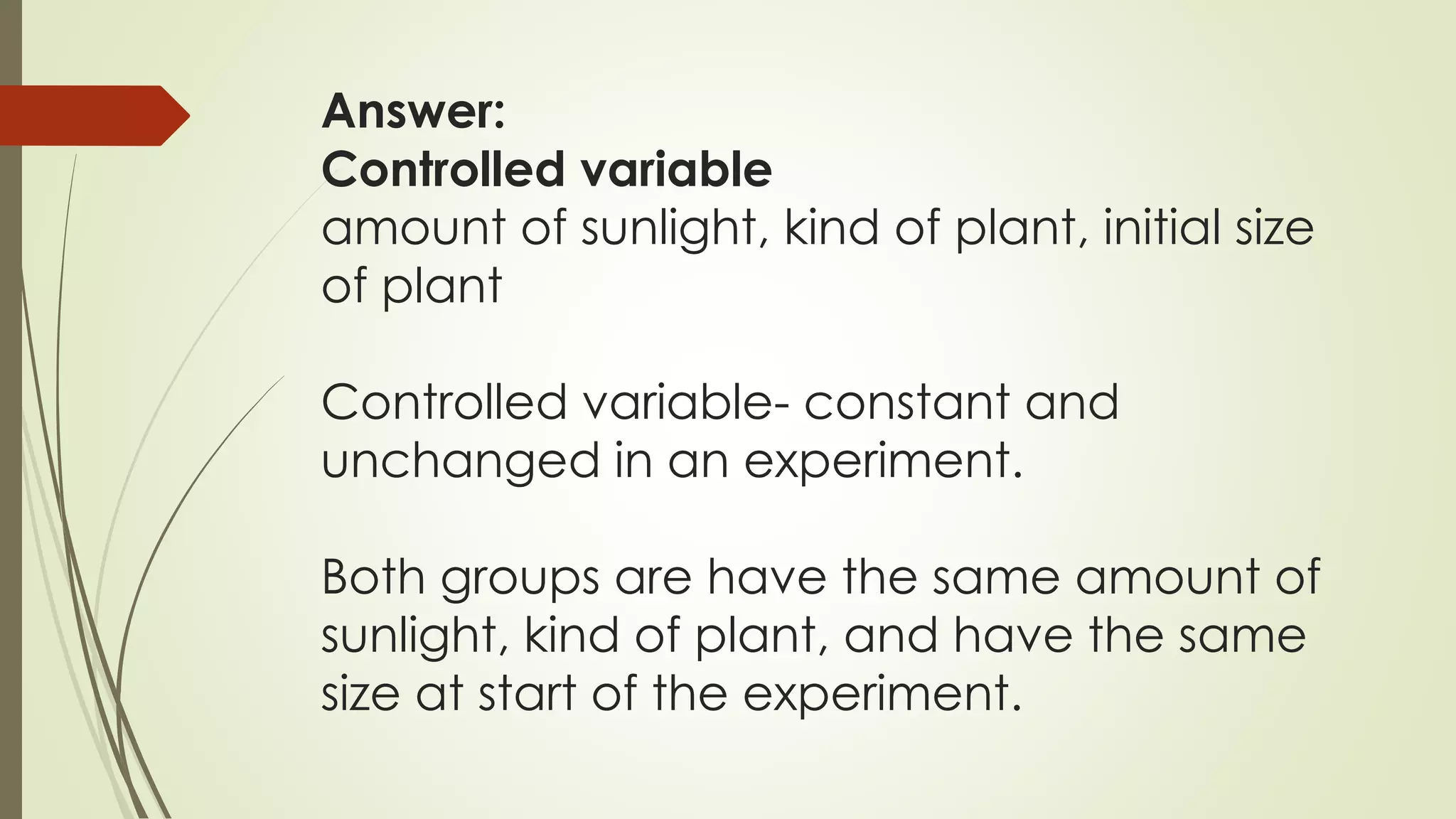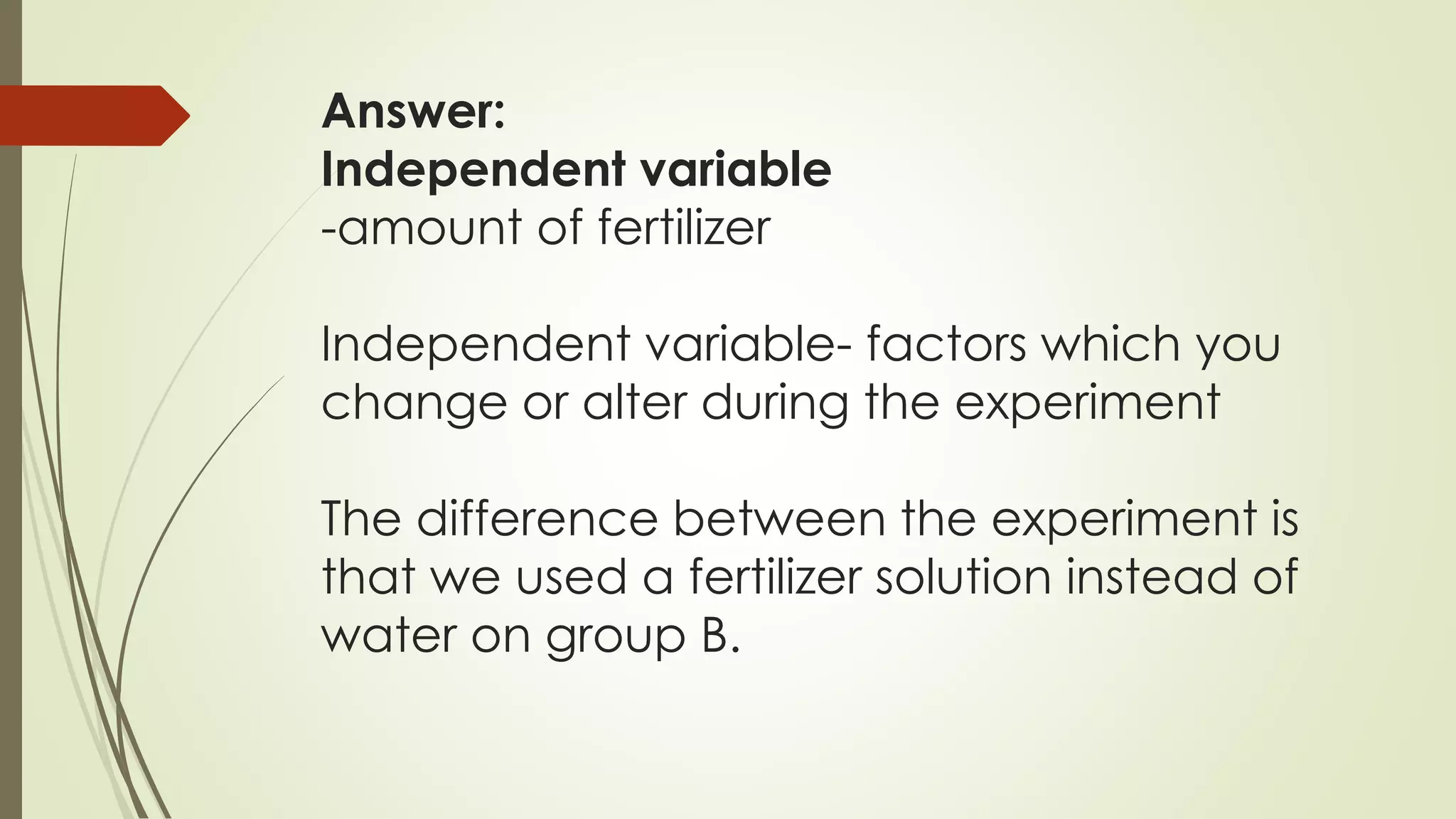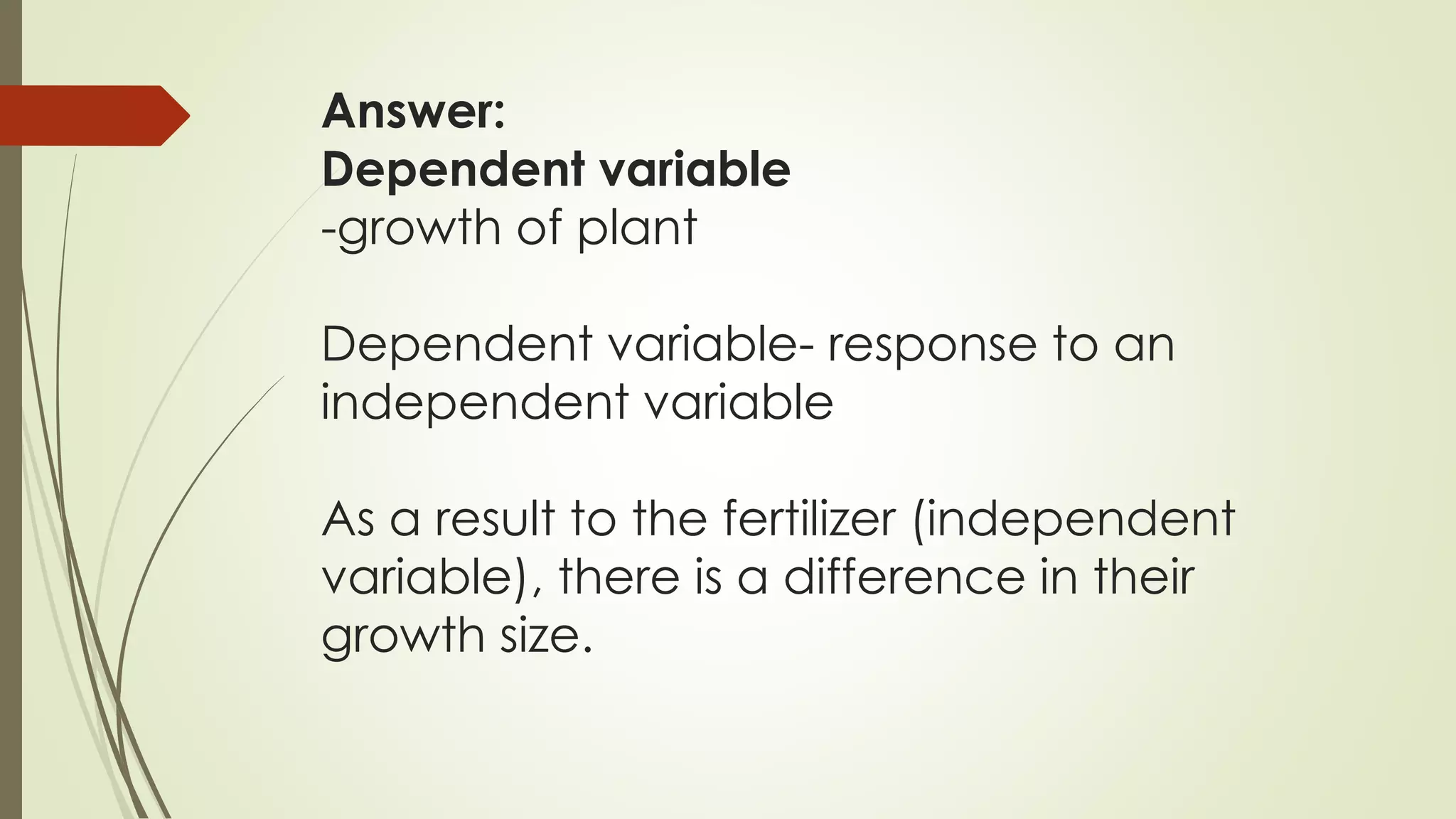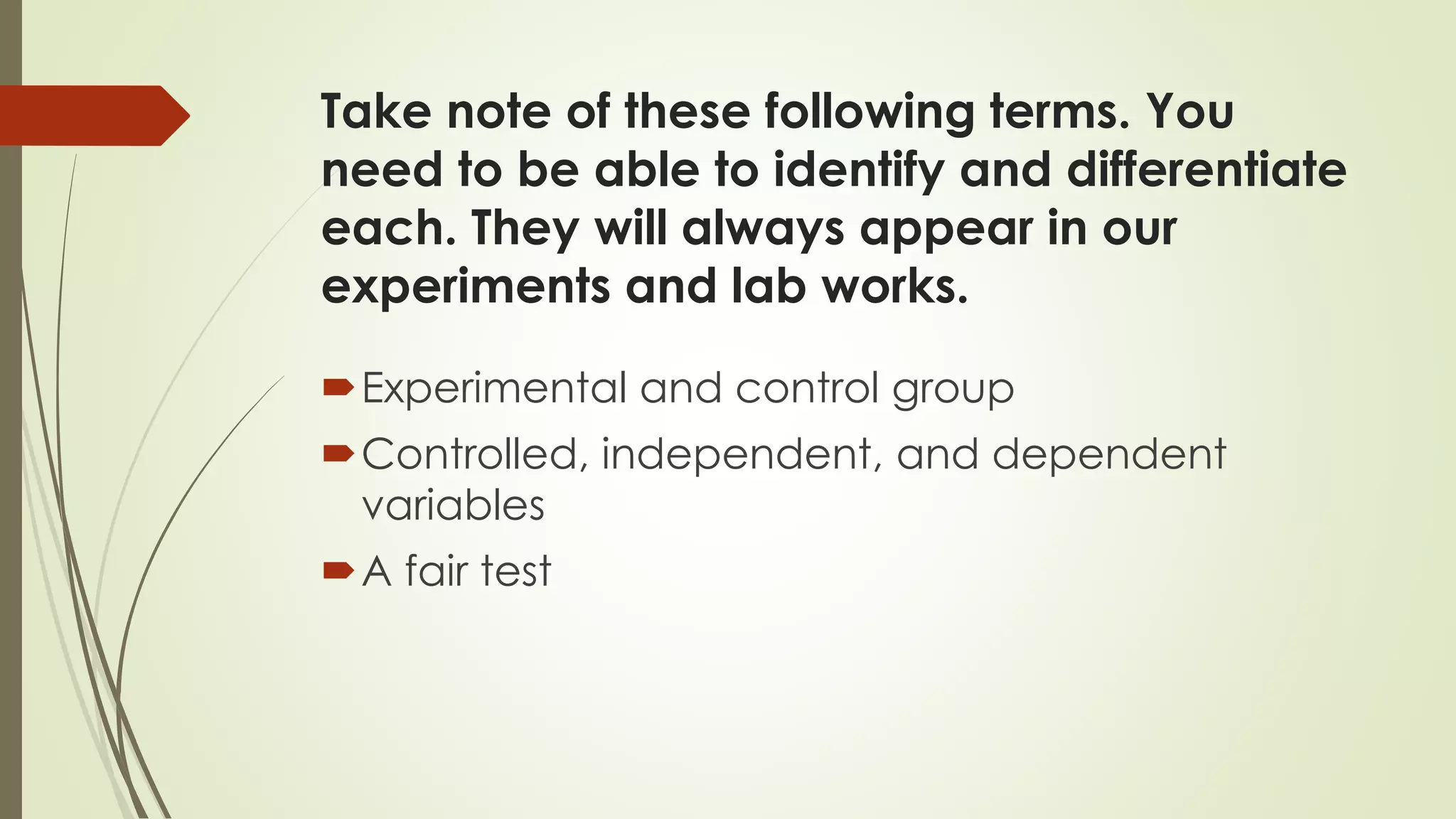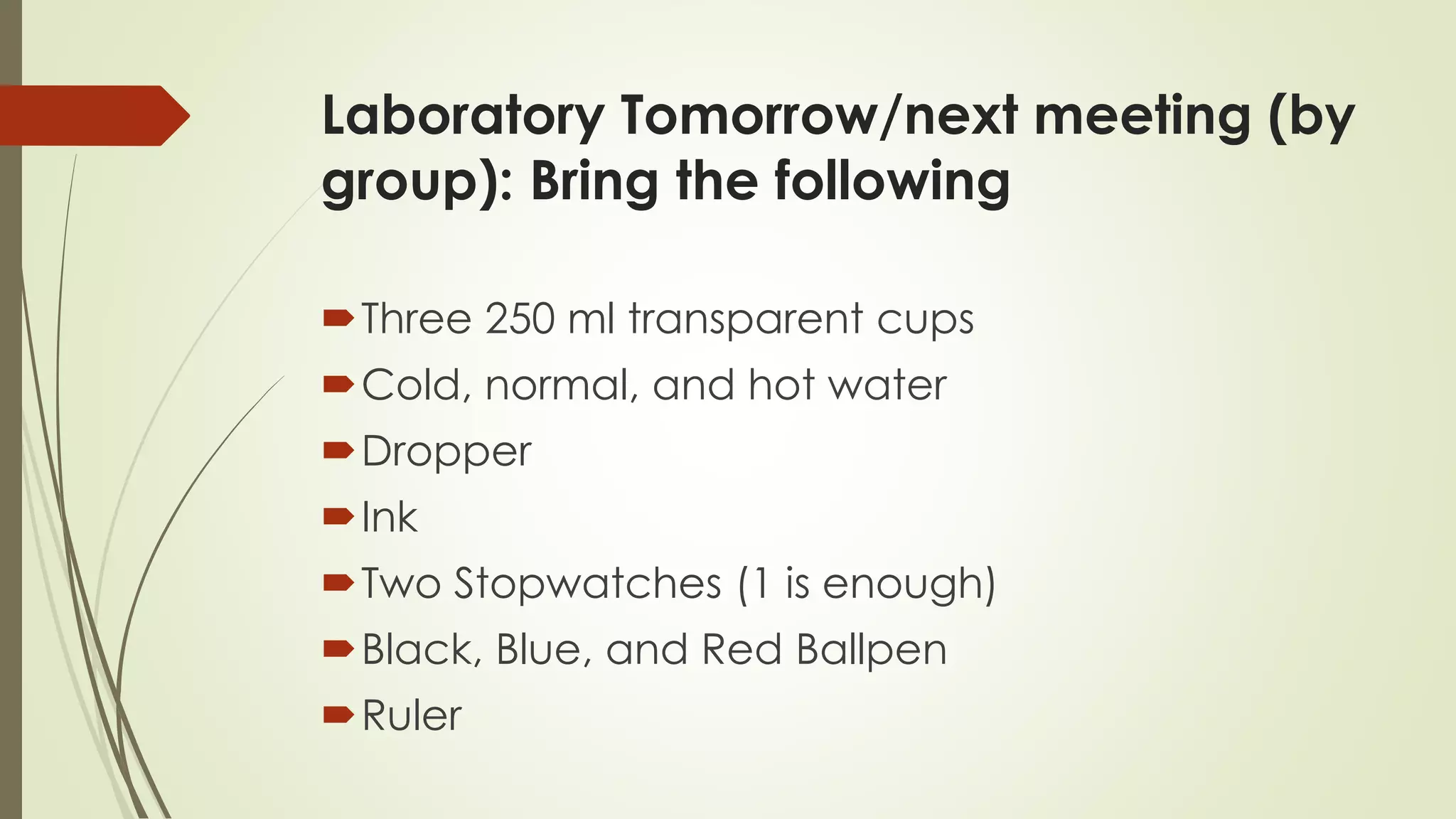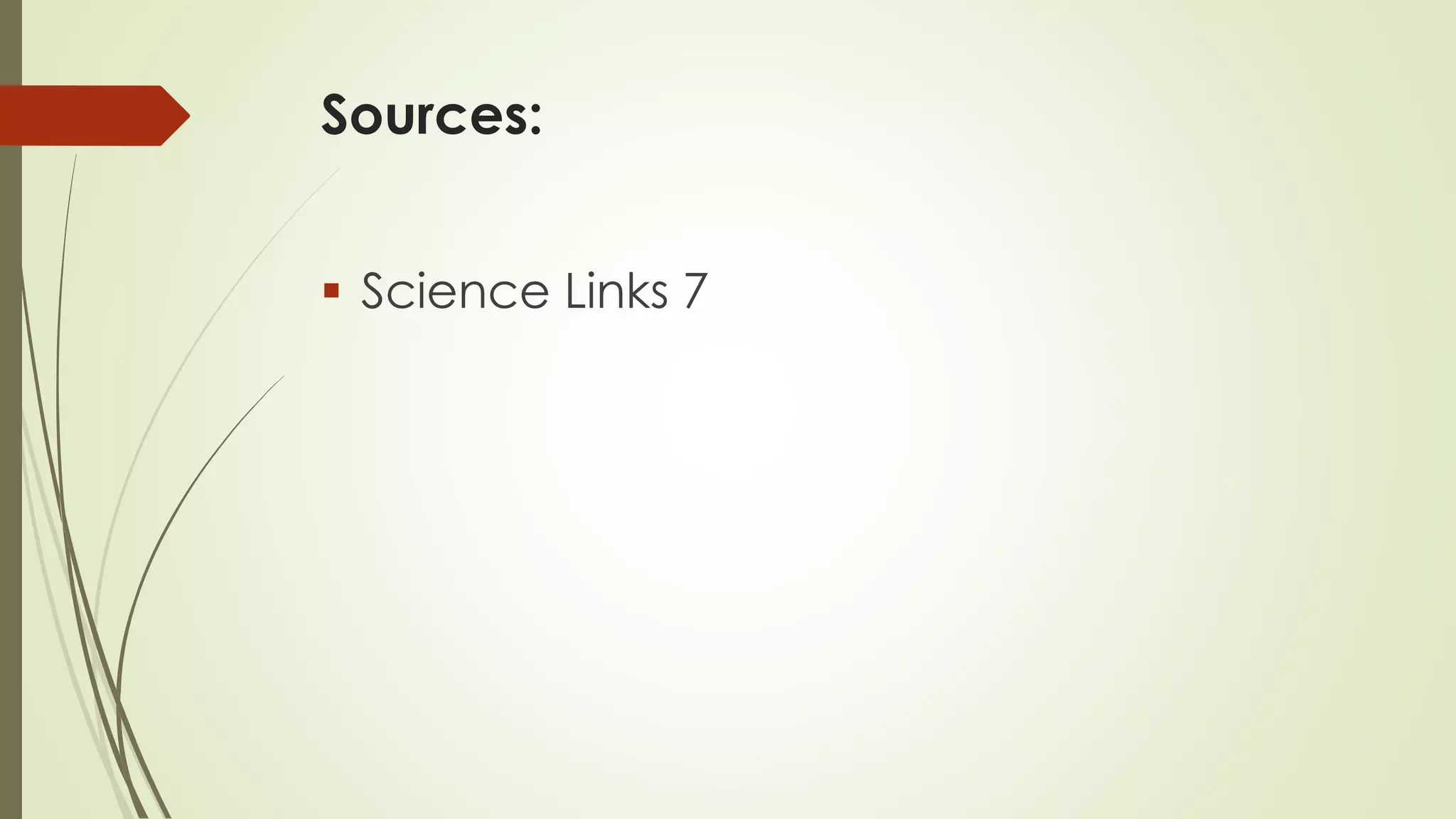This document outlines the scientific method and its application in experiments, detailing the steps involved in hypothesis testing, experimentation, and variable control. It describes different types of experiments: controlled, natural, and field experiments, and illustrates the concepts with examples including experimental and control groups. Key terms such as controlled, independent, and dependent variables are defined to aid in understanding the process of scientific investigation.
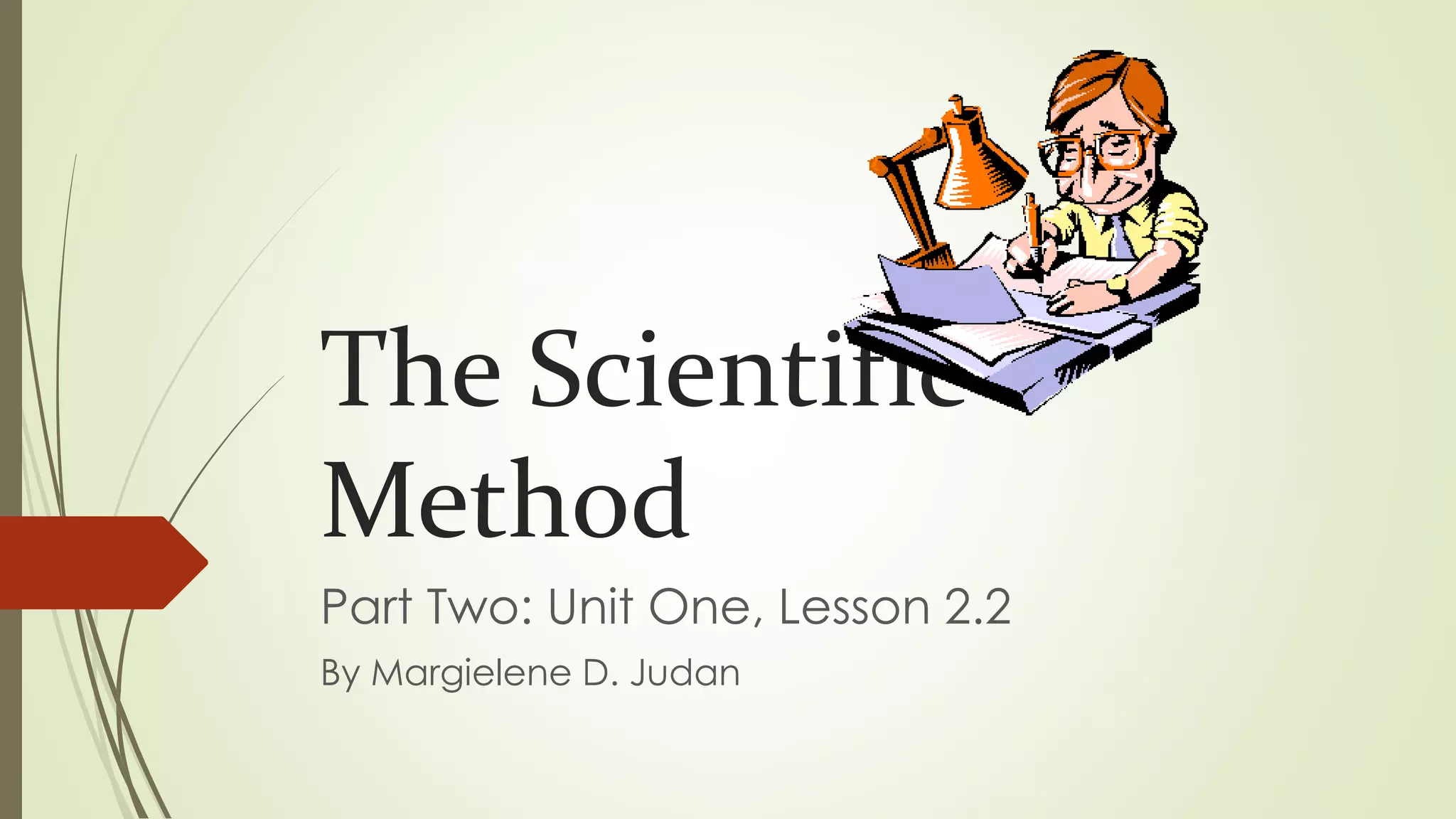
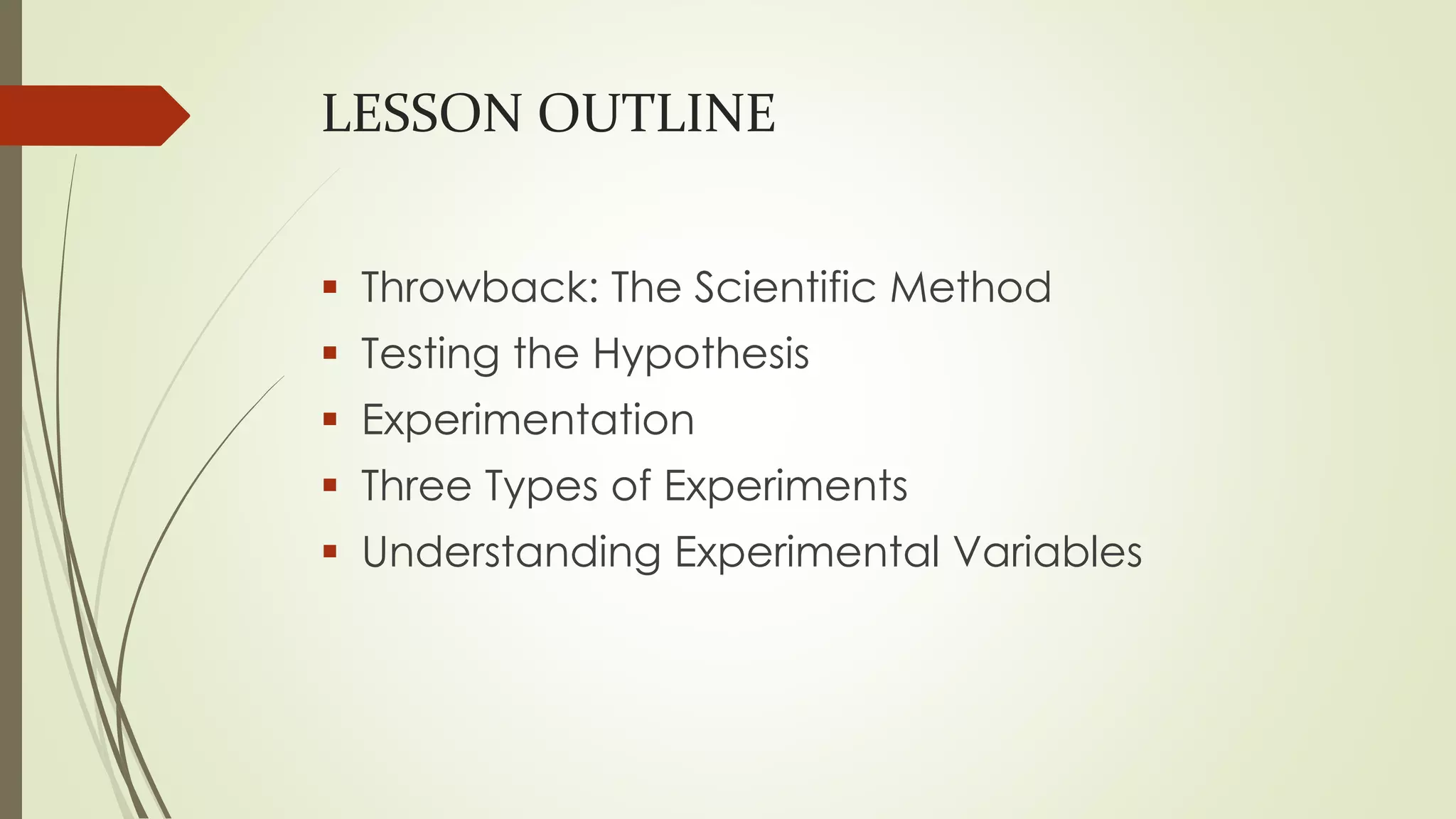
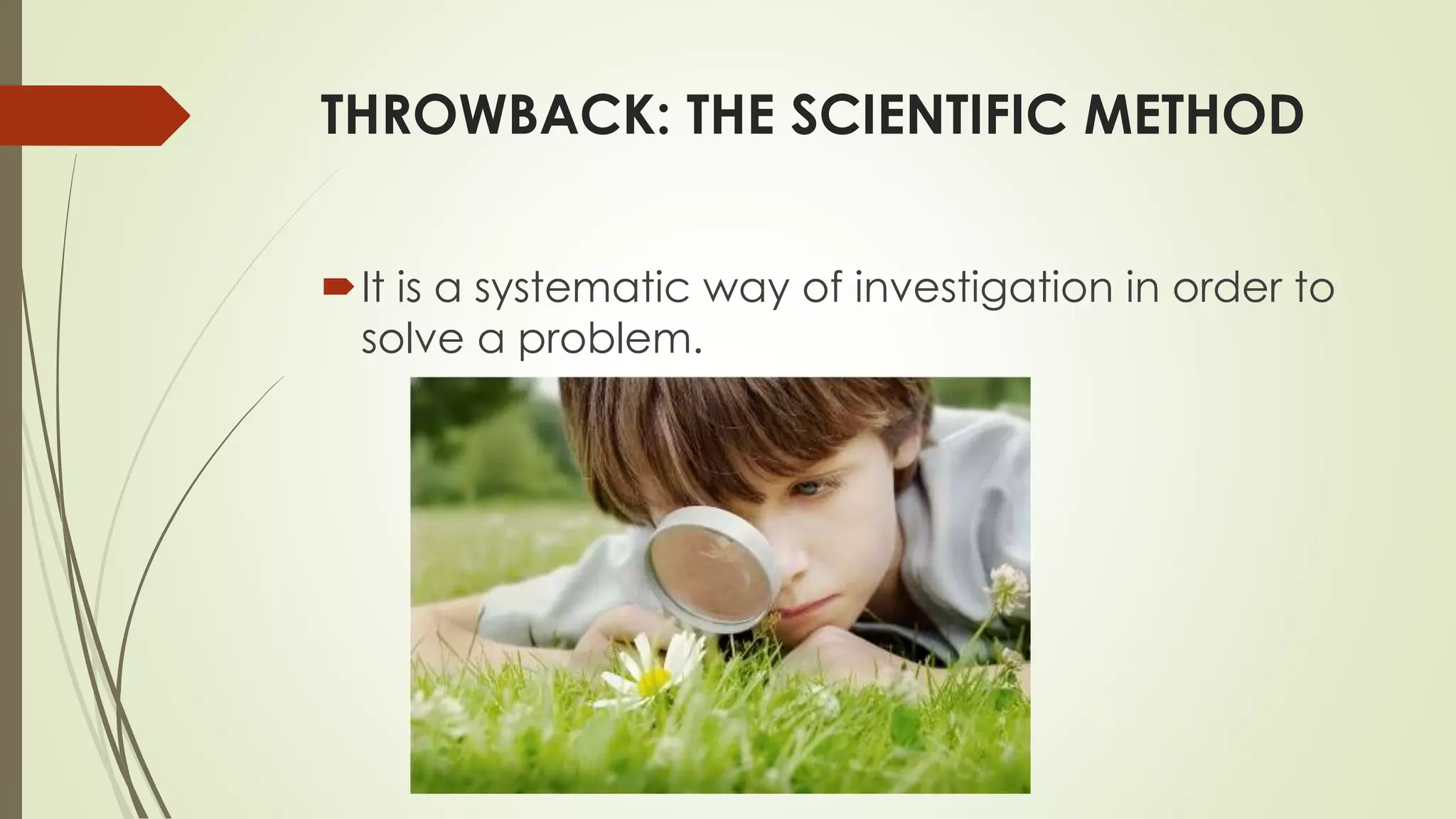
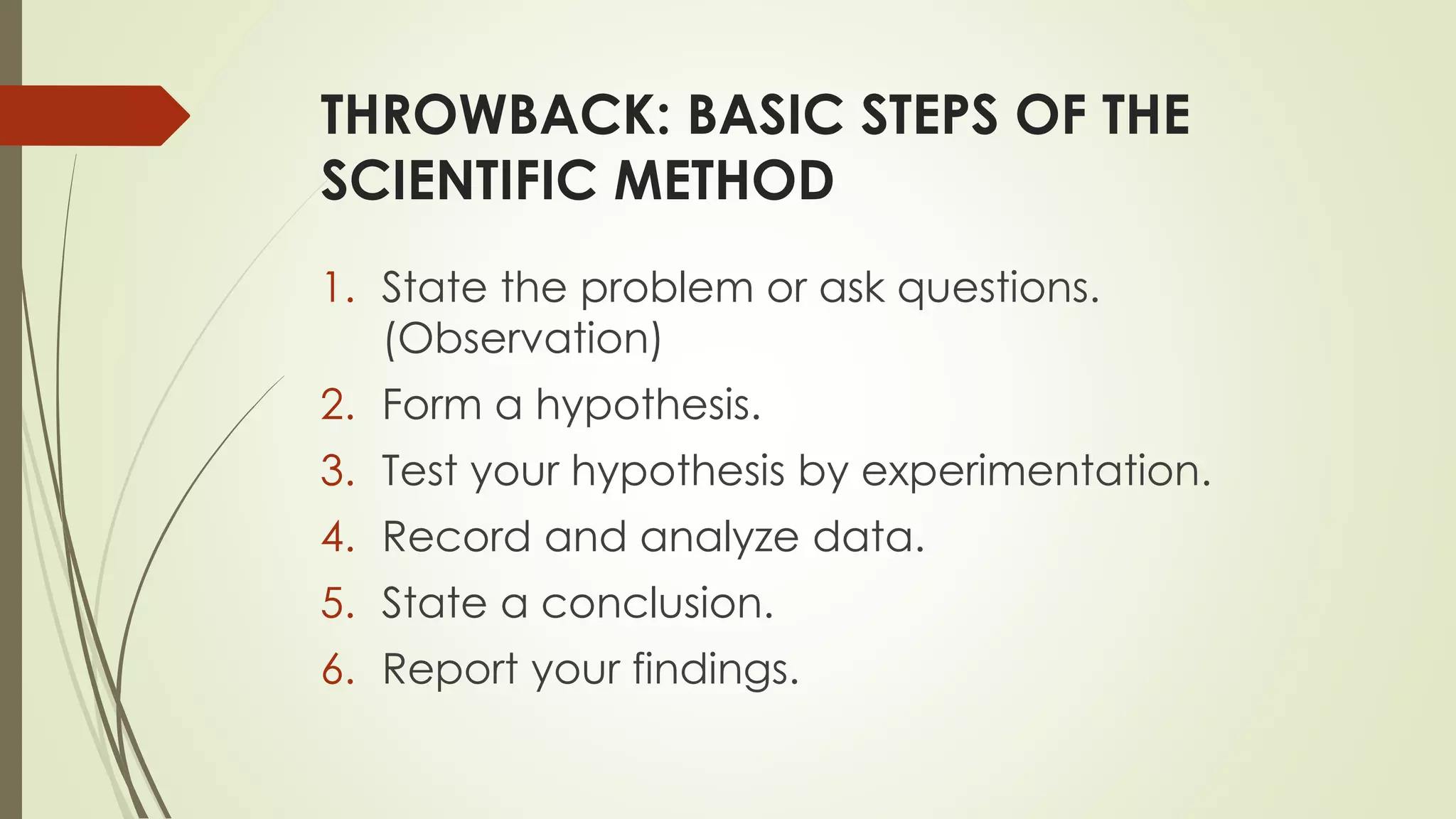
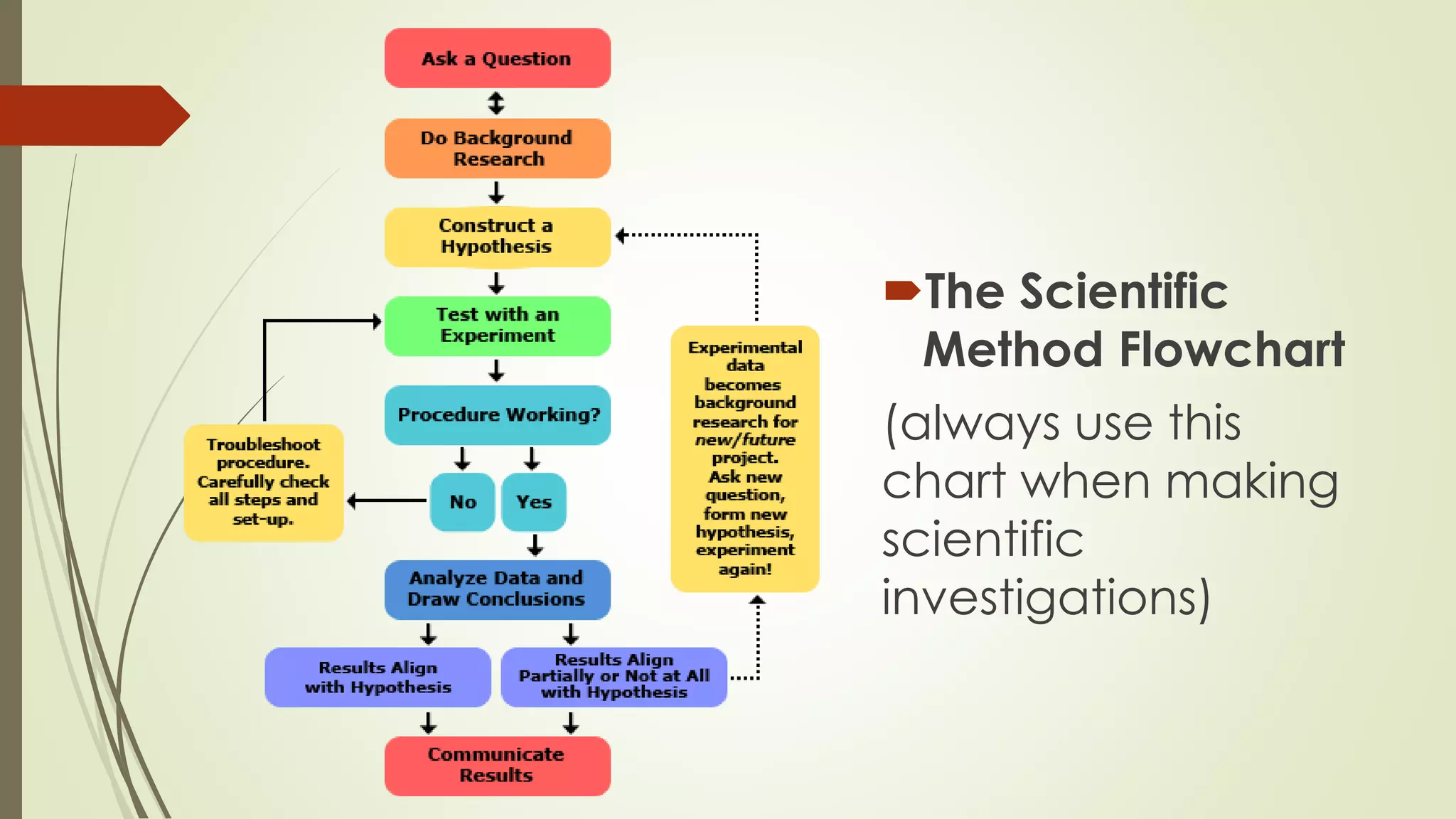
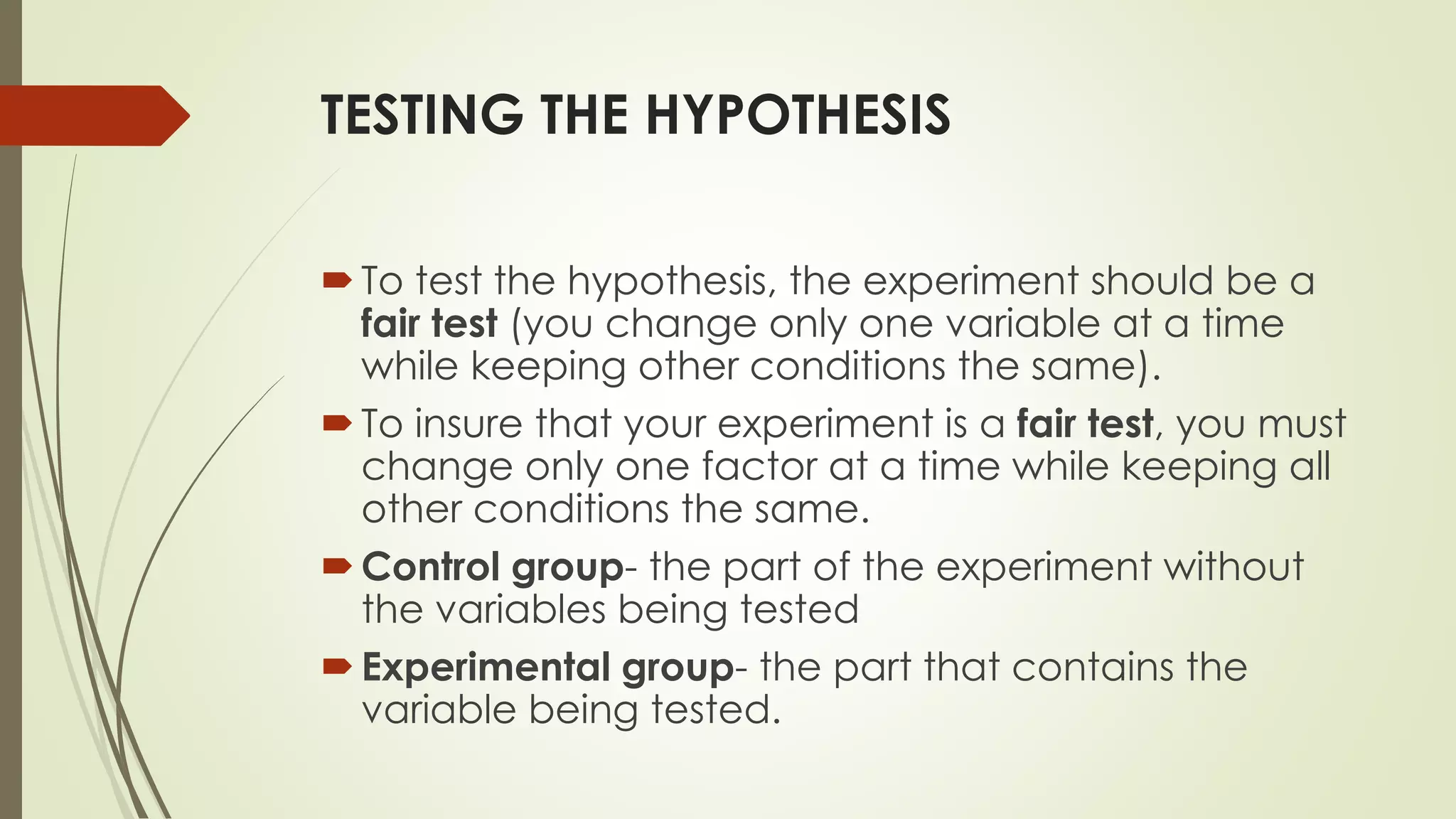
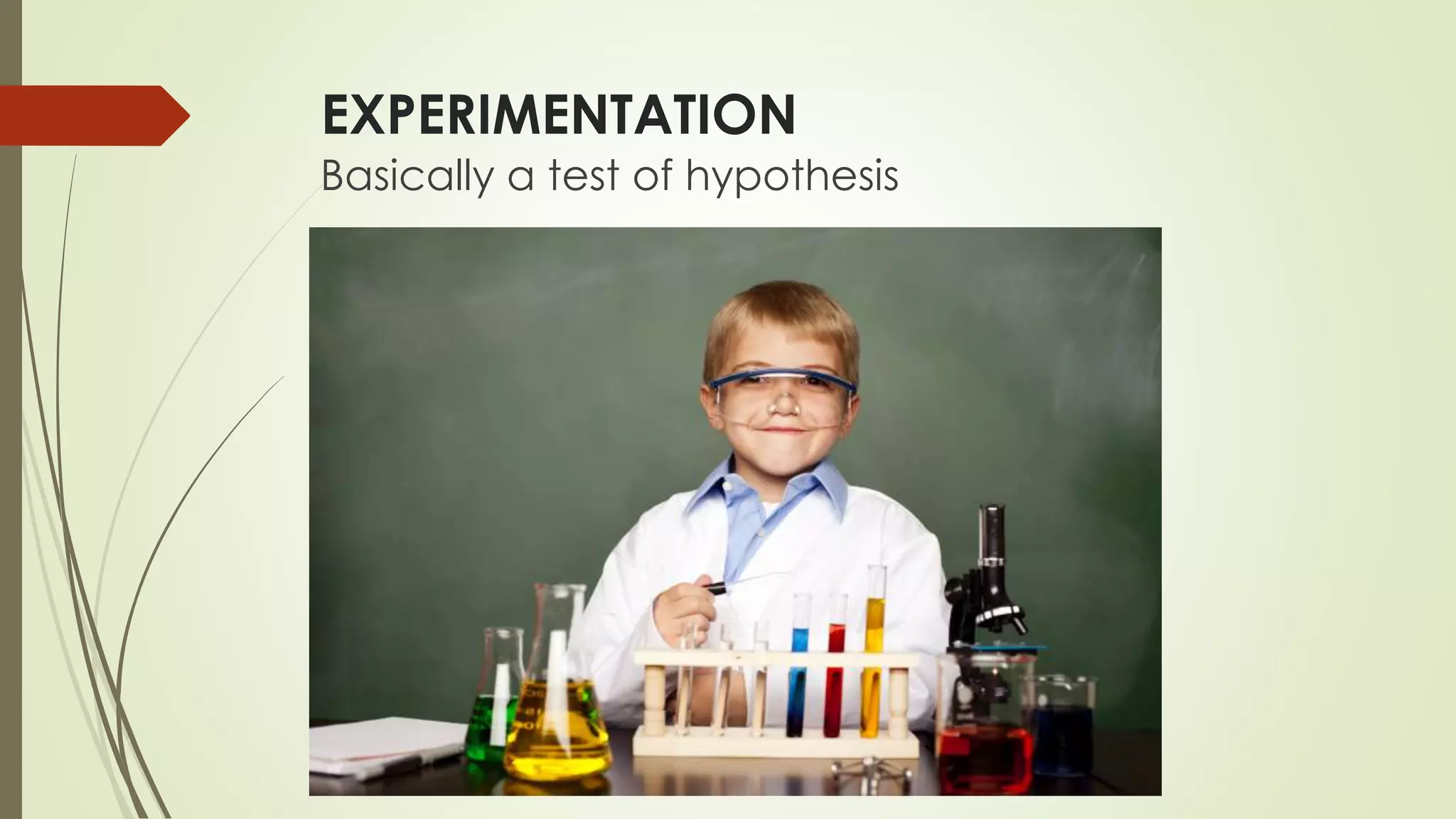
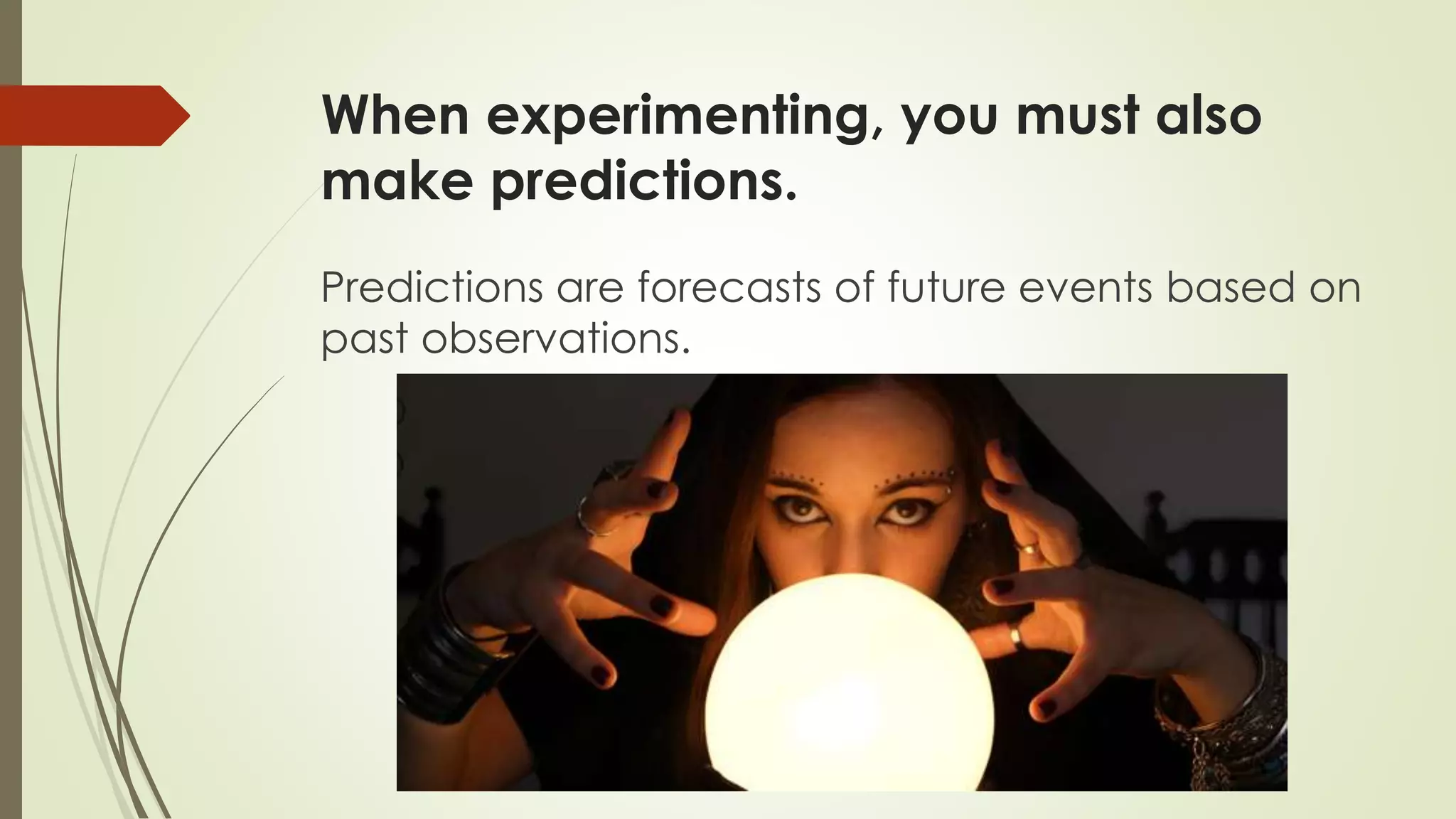
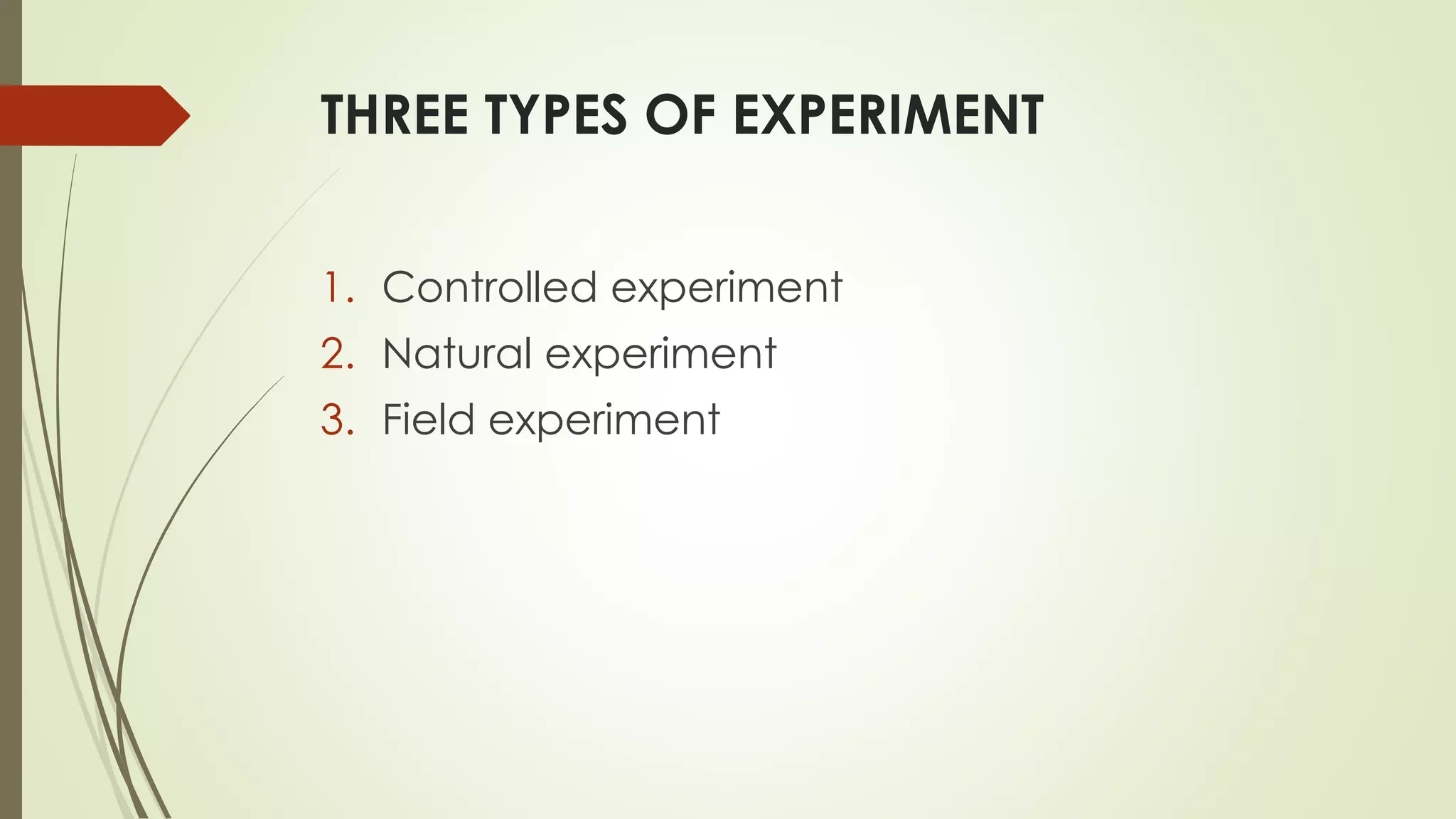
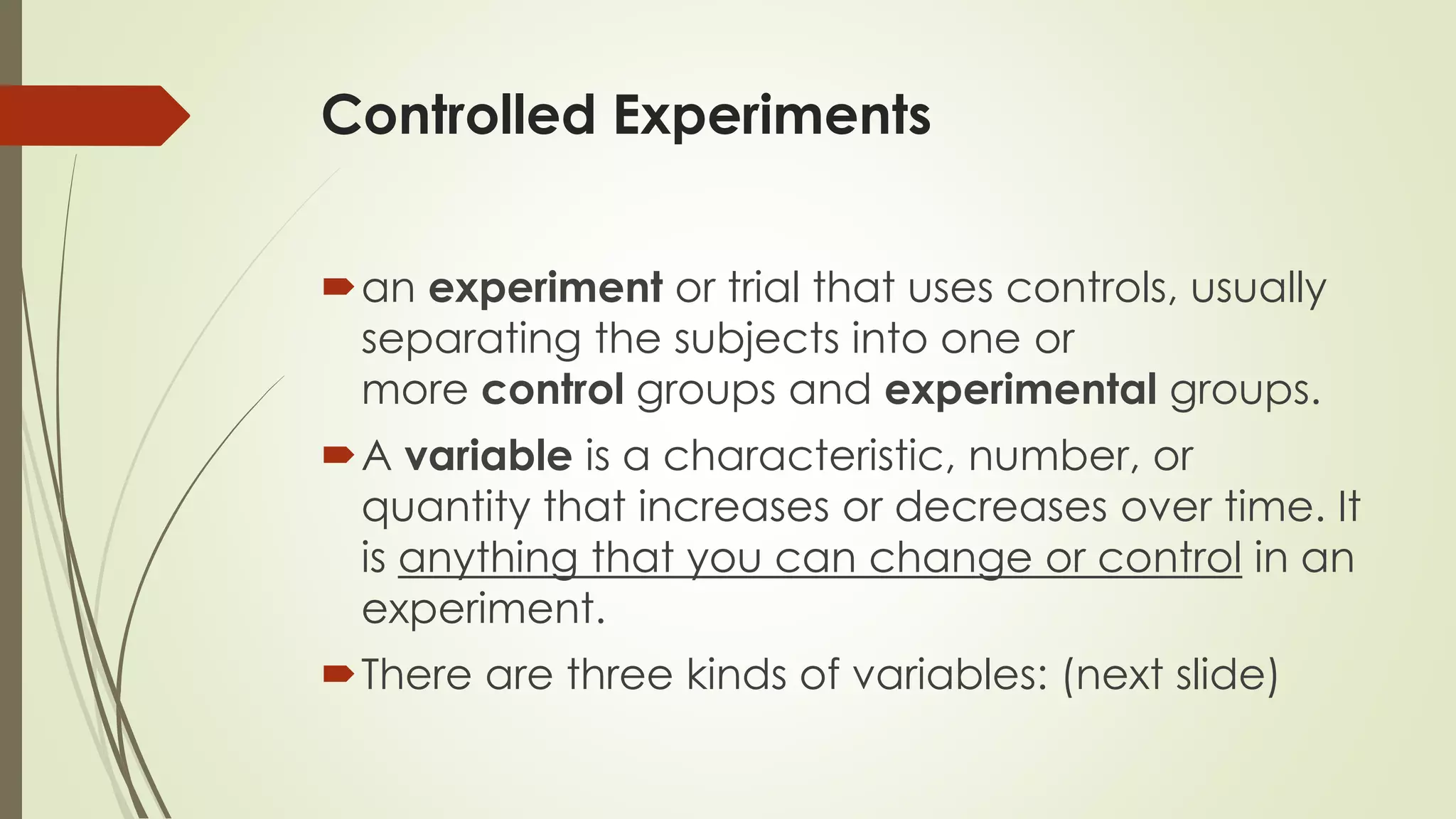
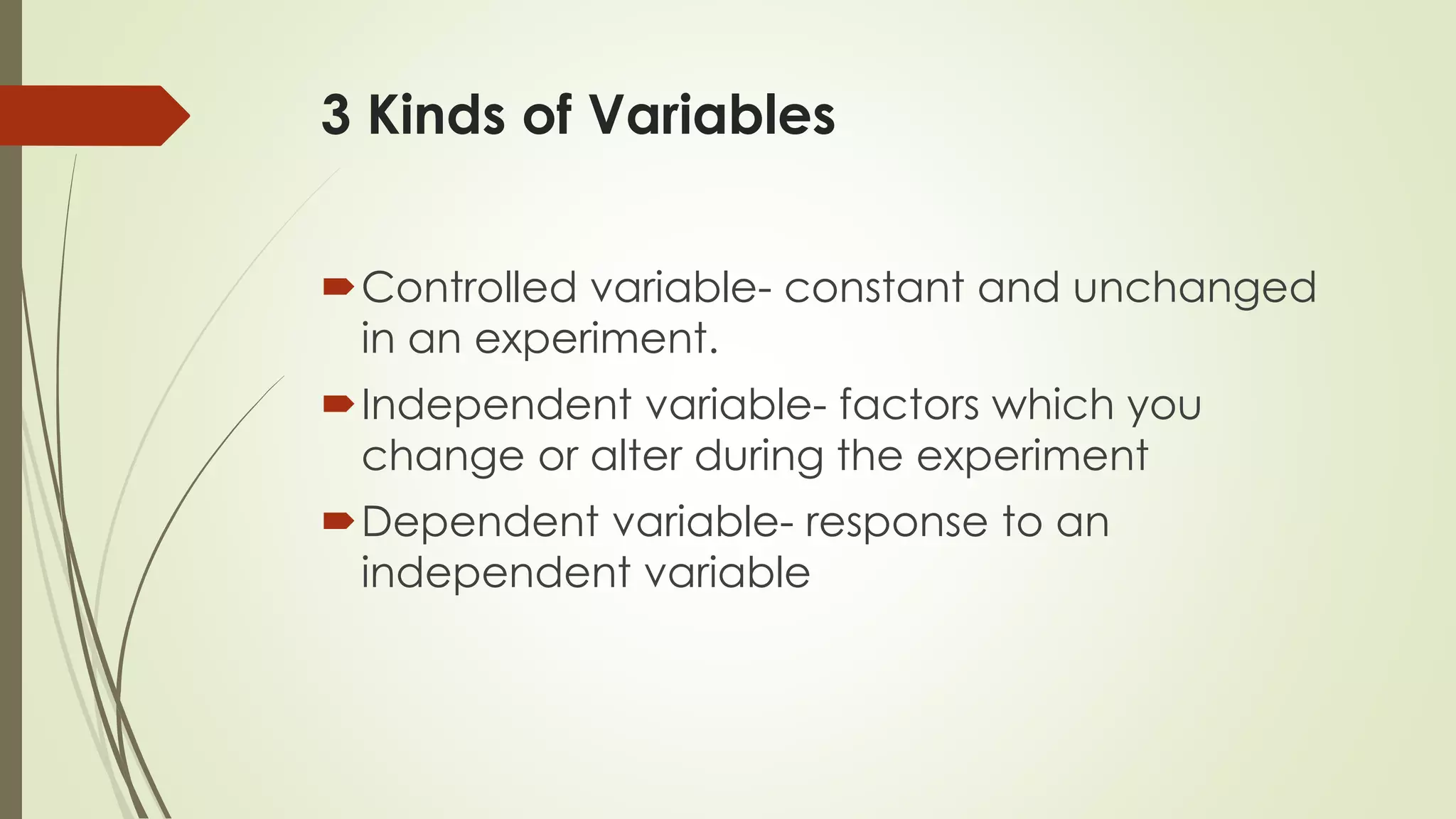
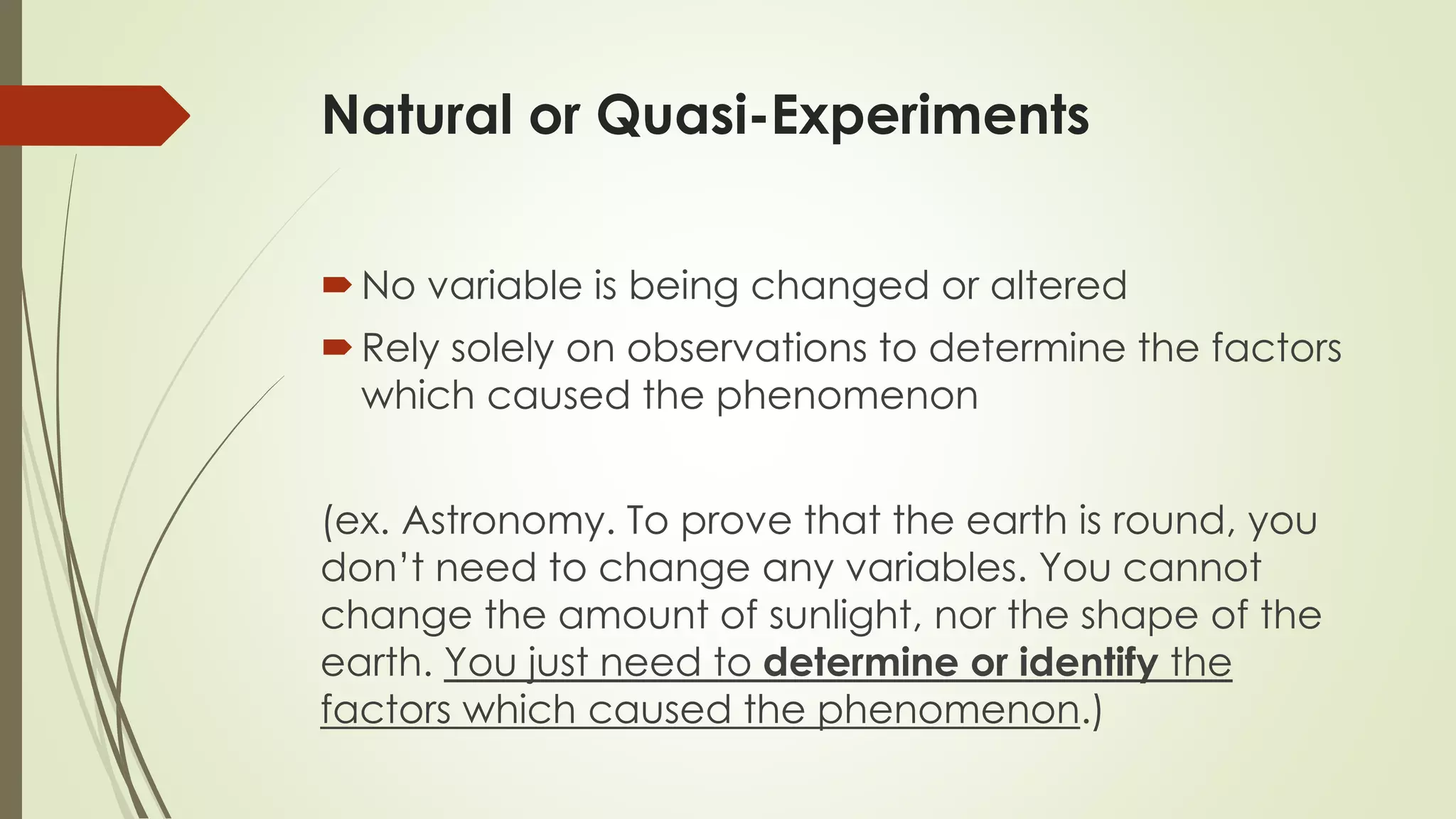
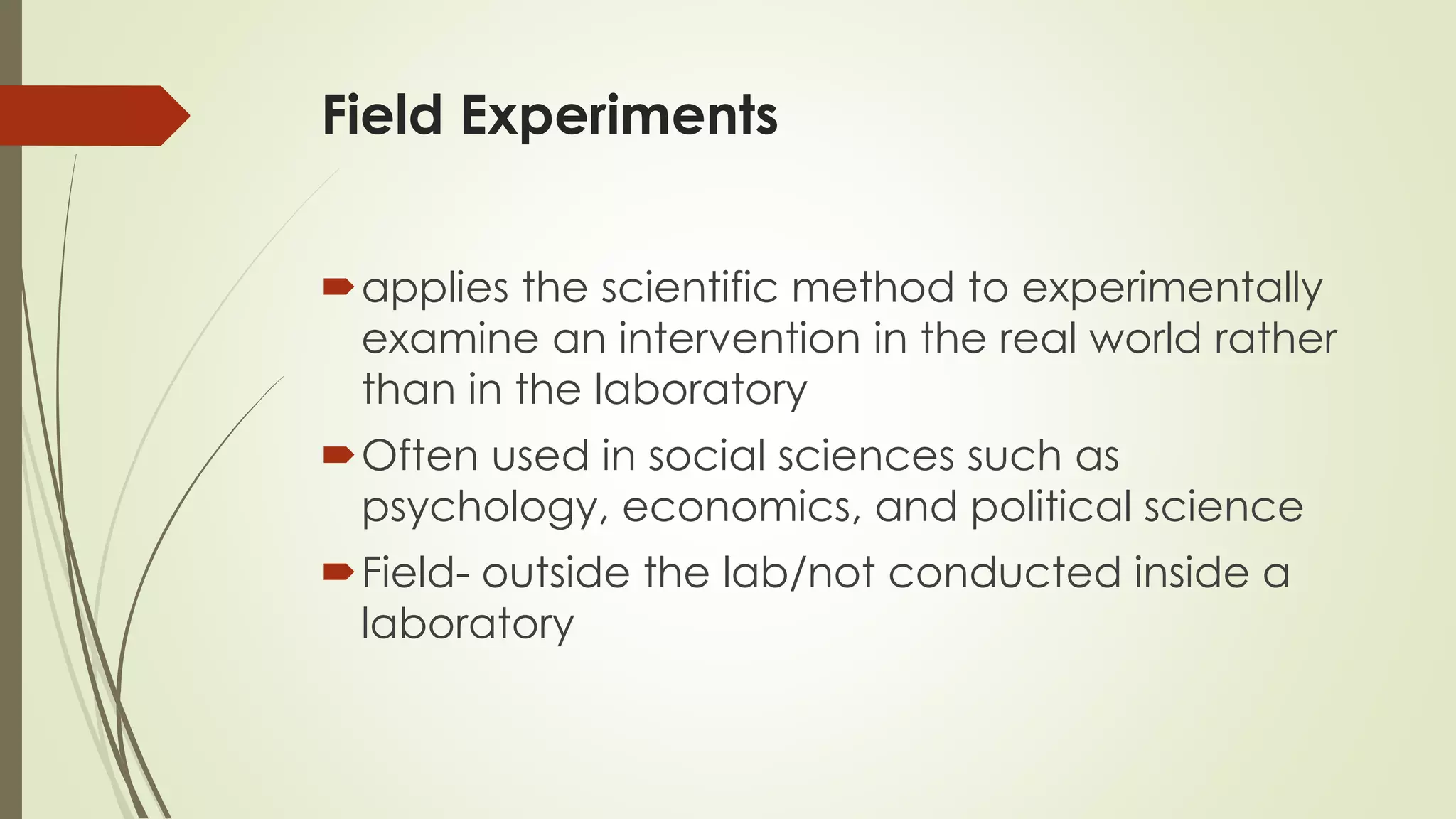
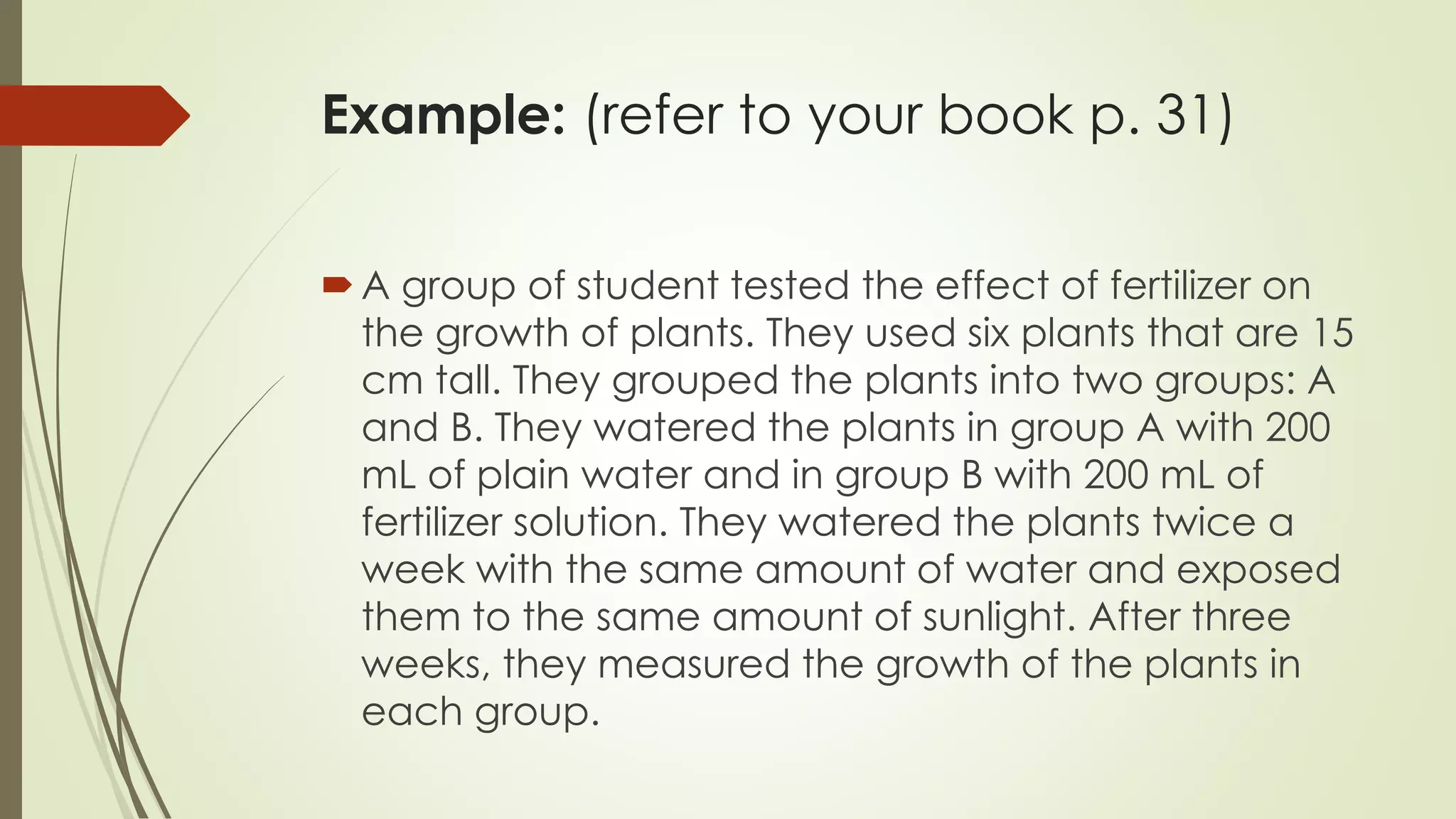
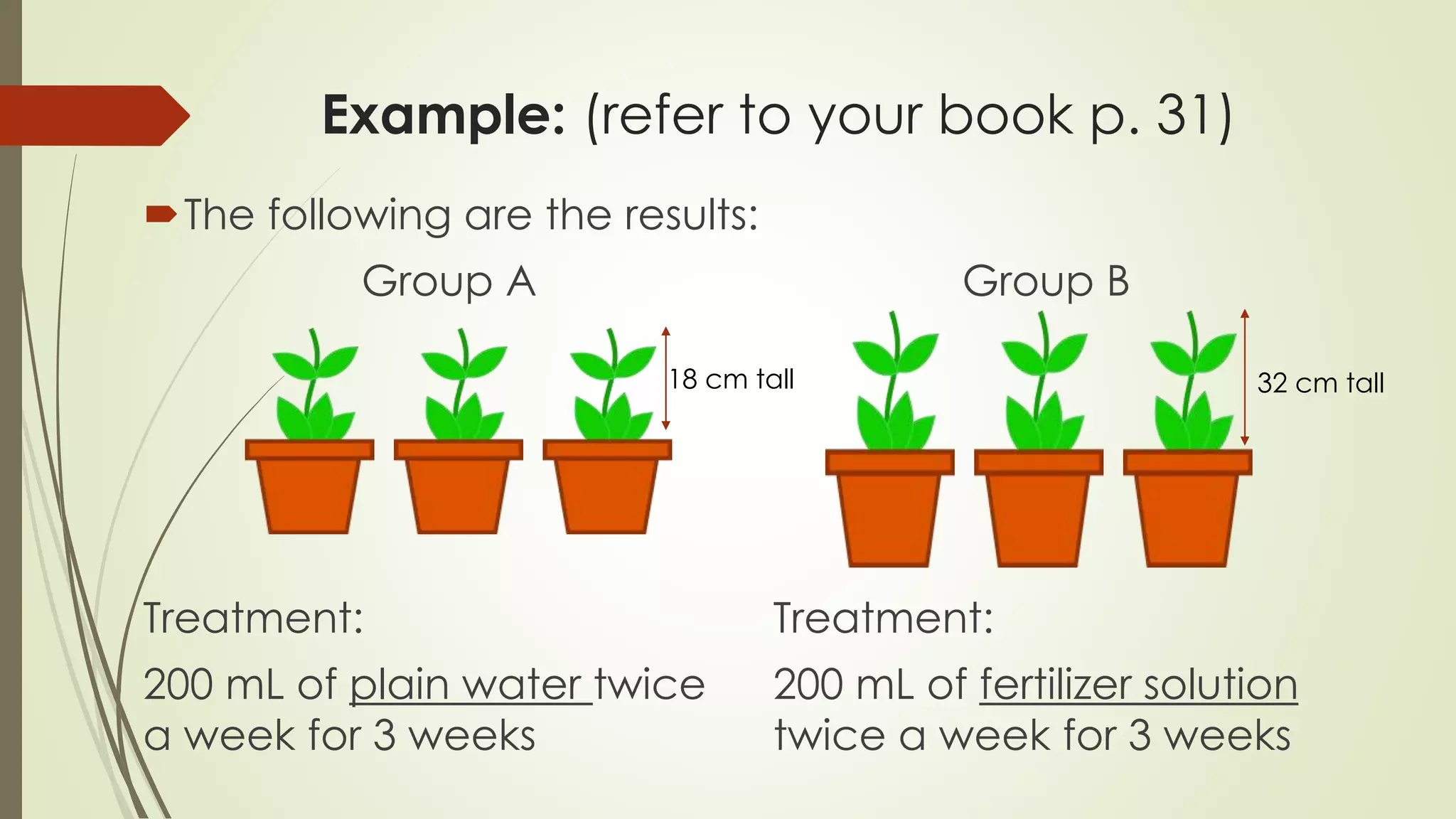
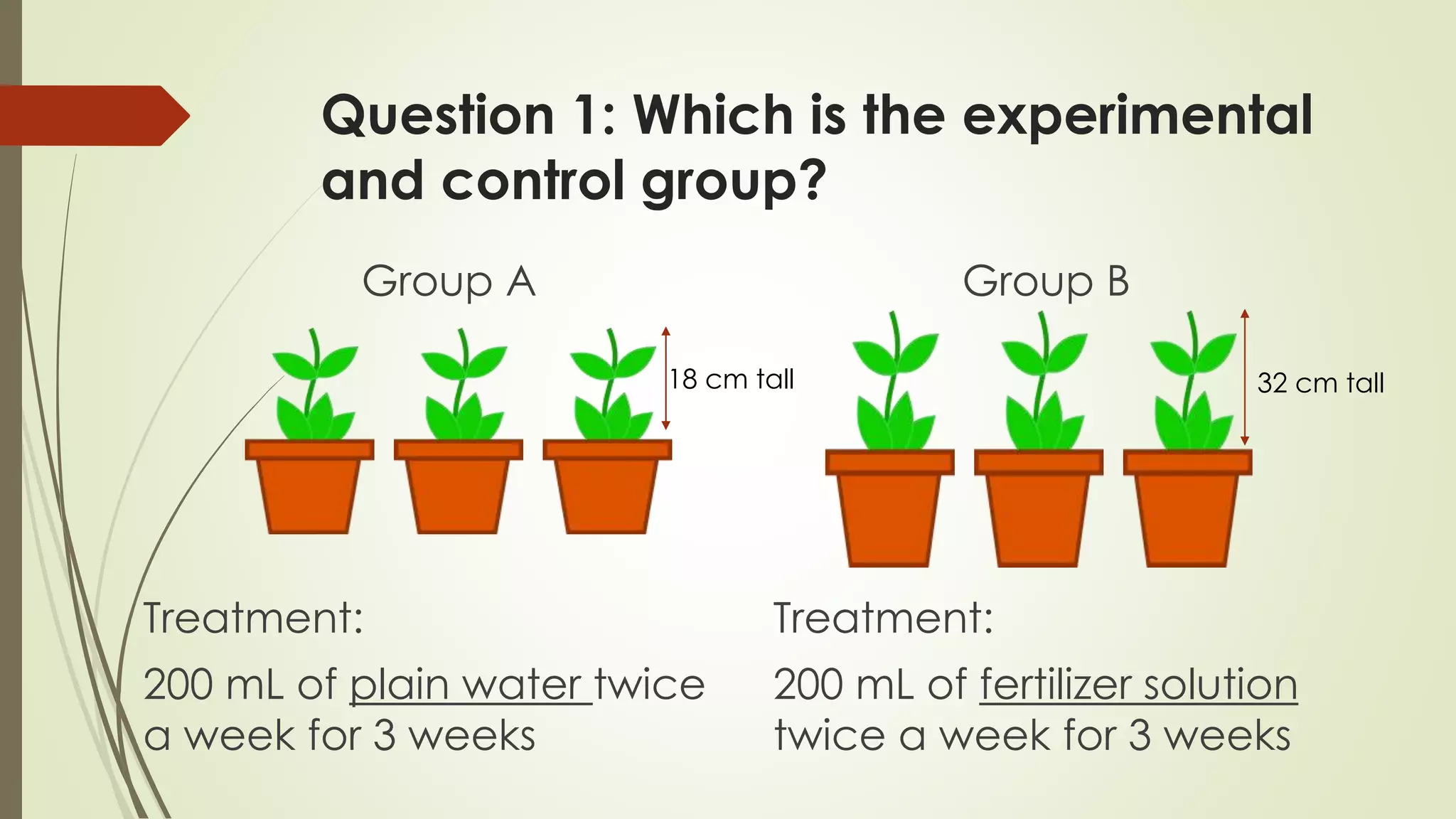
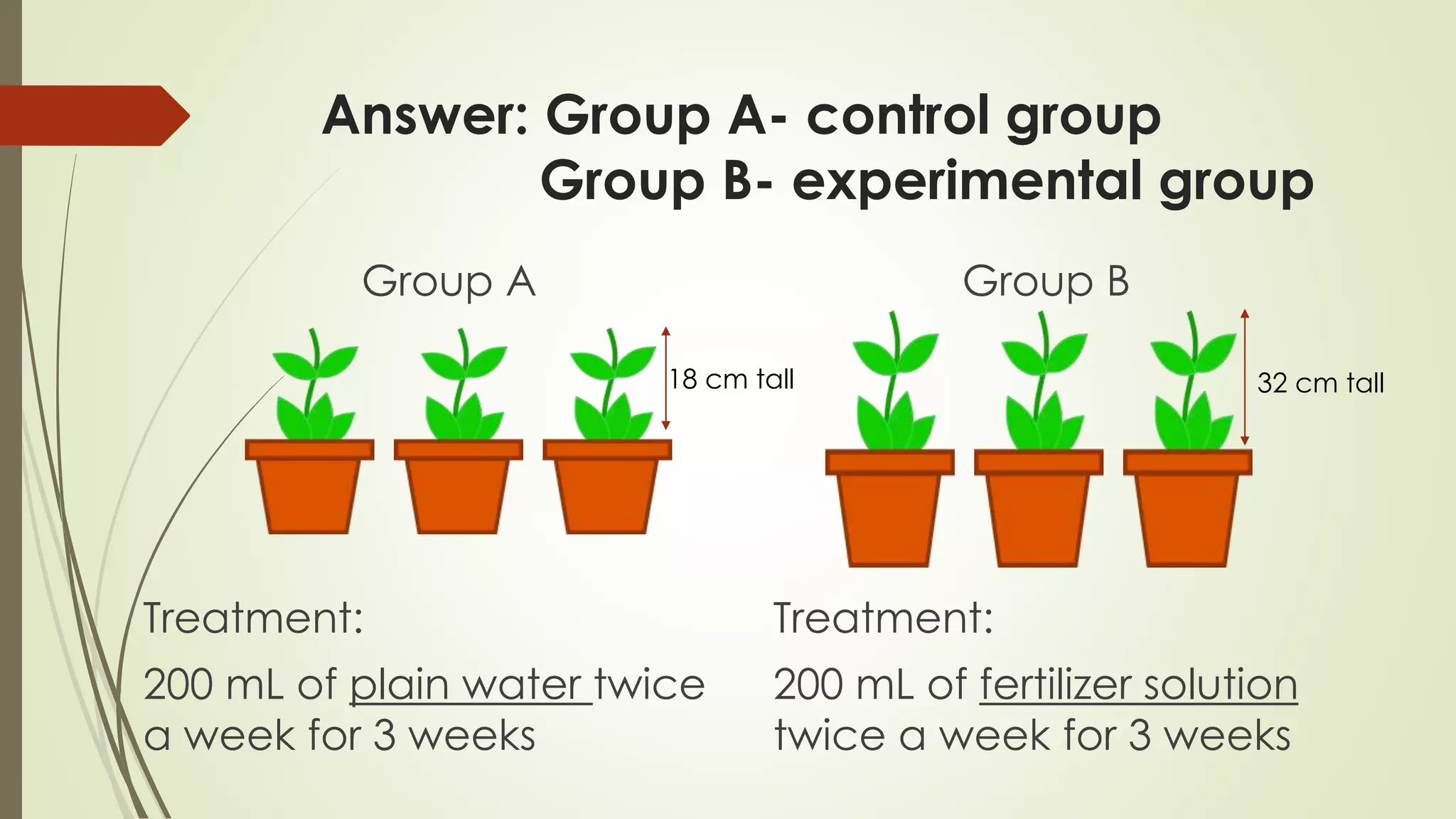
![Control group- the part of the experiment
without the variables being tested
(Group A has no variables tested. It is only
watered with plain water. But a control
group is important for us to be able to
compare the results with the experimental
group.)
Experimental group- the part that contains
the variable being tested.
(Group B was watered with fertilizer [the
variable being tested])](https://image.slidesharecdn.com/u1l1-150701113703-lva1-app6891/75/Unit-1-Lesson-1-8-The-Scientific-Method-Part-Two-18-2048.jpg)
